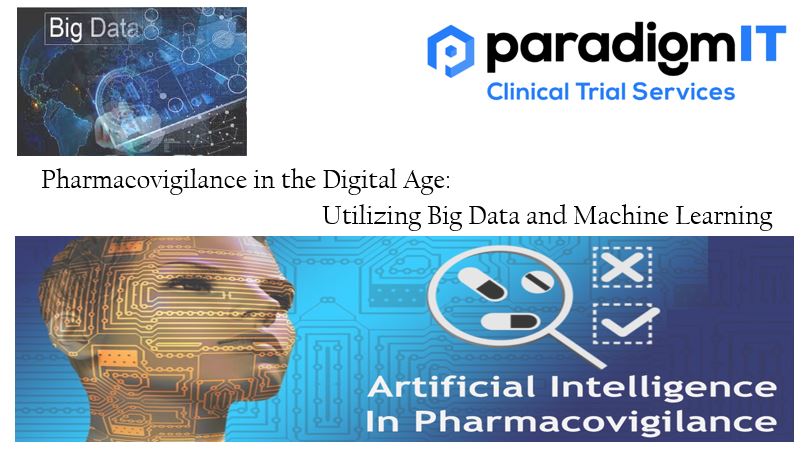The term “pharmacovigilance” in the digital era refers to the gathering, monitoring, and analysis of data on the safety of pharmaceuticals and medical devices using technology and digital platforms. This includes using social media, electronic health records, and other digital sources to identify and track potential drug side effects, as well as data analytics to detect patterns and trends in drug safety. This method makes it possible to monitor the safety of pharmaceuticals and medical items more thoroughly and effectively and can speed up the identification of potential safety concerns.
Big data can be used to collect and analyze massive amounts of information from a variety of sources, including electronic health records, clinical trials, and social media. This data can then be used to identify patterns and associations that may indicate a medication safety issue.
Machine Learning (ML) algorithms are enabled by the advanced technologies such as Artificial Intelligence (AI), NLP techniques, Cloud Computing to analyze these big data and can be used to,
- find patterns and relationships that human analysts might find difficult to spot.
- categorize unfavorable drug reactions,
- foresee probable drug-drug interactions, and
- pinpoint risk factors for specific side effects.
Challenges faced in adopting new technologies in Pharmacovigilance:
- Cost: Significant financial and material investments are frequently needed to adopt new technology.
- Resistance to change: Some workers could be hesitant to change, especially if they feel at ease with the systems and procedures in place now.
- Integration with existing systems: Technology must be able to smoothly interact with current systems and procedures.
- Data security and privacy: Modern technology must adhere to stringent security standards while handling sensitive patient data.
- Training and support: Employees must receive training on the new technology, and assistance must be readily available to guarantee that any problems are rapidly fixed.
- Compliance with regulatory requirements: Emerging technologies must adhere to all applicable regulatory standards and requirements, such as those established by the FDA or the EMA.
- Technical issues: There can be bugs and technical problems with new technology that need to be fixed.
In pharmacovigilance operations like risk management and benefit-risk analysis, Machine learning and big data can help pharmacovigilance by identifying potential safety concerns with medications more quickly and accurately and to support the decision-making process.
In conclusion, pharmacovigilance can benefit from the use of machine learning and big data to enhance the detection, evaluation, and management of pharmaceutical safety issues.
For more information –
Visit our website – www.paradigmit.com
Or you can write us at ask@paradigmit.com Follow us for more – https://www.linkedin.com/company/paradigmittechnologyservices/?viewAsMember=true


